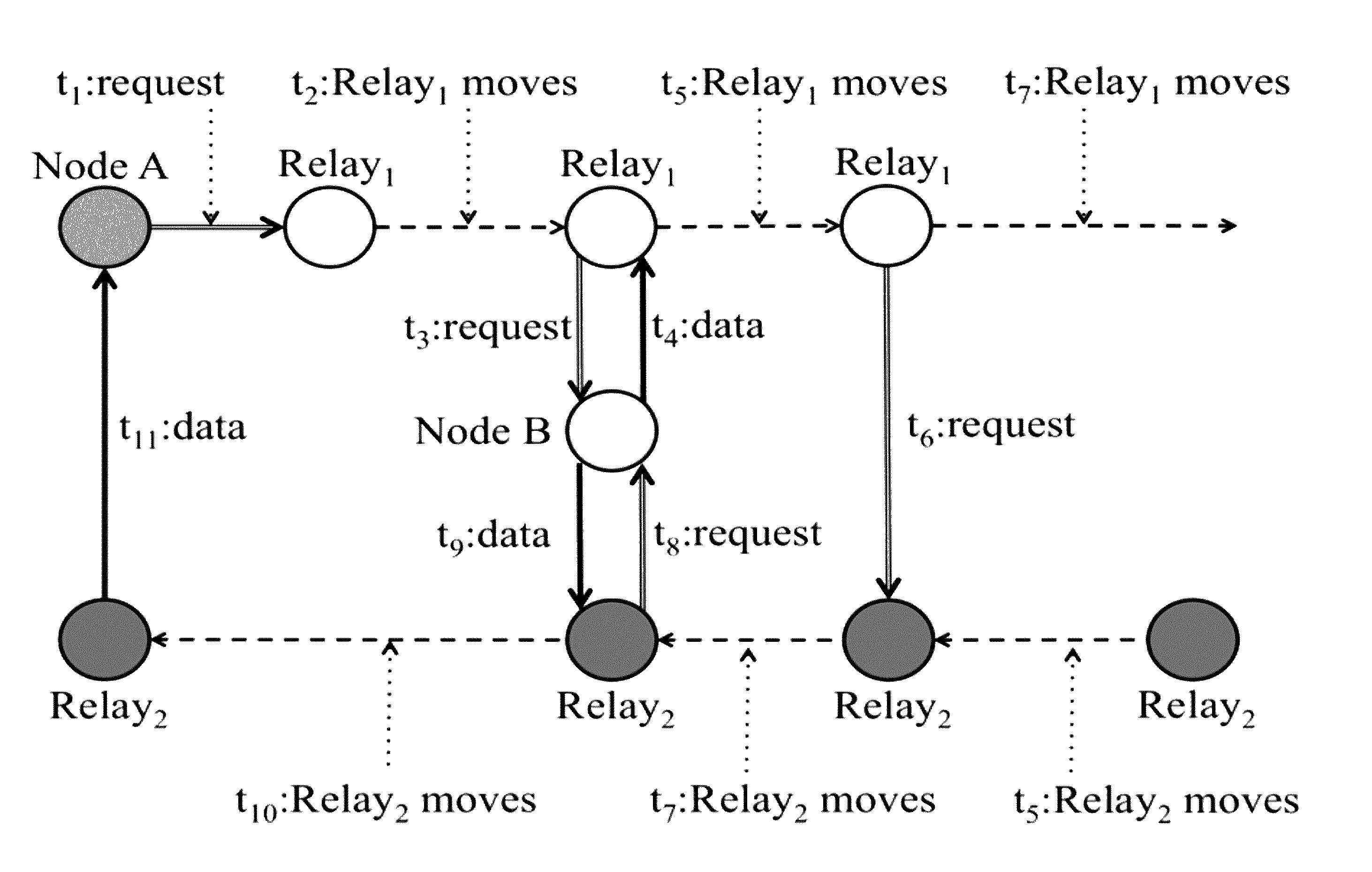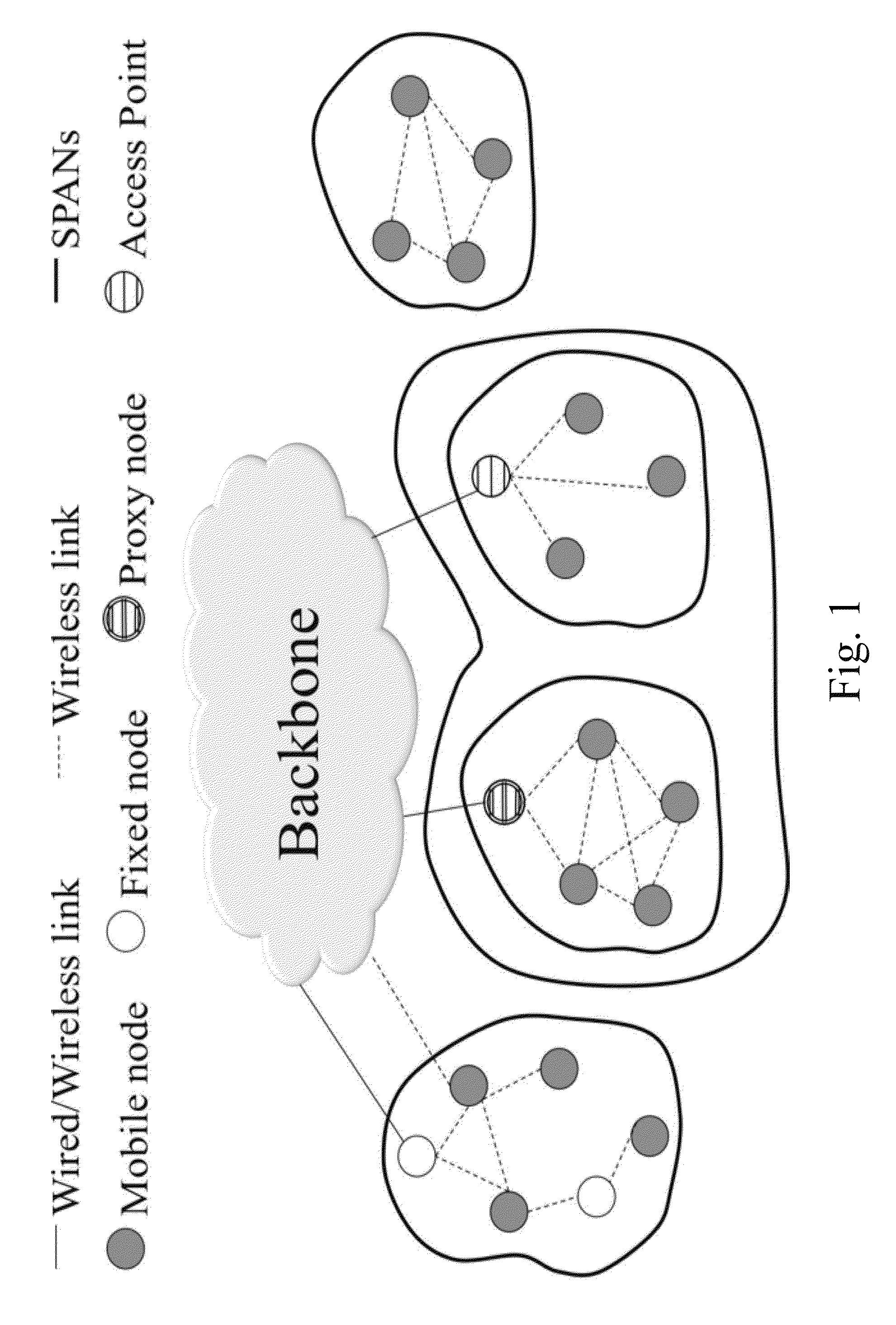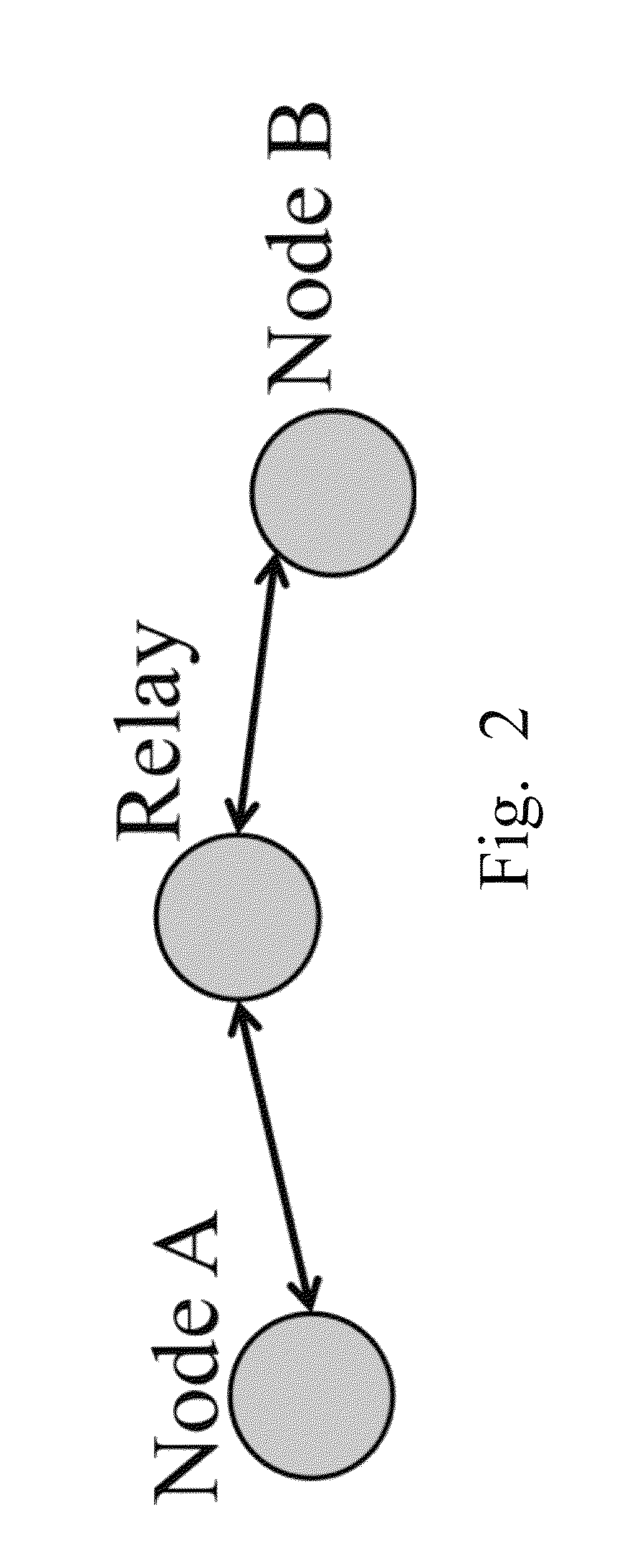Systems and methods for creating, managing and communicating users and applications on spontaneous area networks
a technology of user and application communication and system, applied in the field of mobile device networks, can solve problems such as disconnections and changes in network topology, and difficulty in joining these mobile devices to local networks and discovering and communicating with other mobile devices in the same geographic area
- Summary
- Abstract
- Description
- Claims
- Application Information
AI Technical Summary
Problems solved by technology
Method used
Image
Examples
Embodiment Construction
[0057]The present invention relates to an improvement in mobile networking. The following description is presented to enable one of ordinary skill in the art to make and use the invention as provided in the context of a particular application and its requirements. Various modifications to the preferred embodiment will be apparent to those with skill in the art, and the general principles defined herein may be applied to other embodiments. Therefore, the present invention is not intended to be limited to the particular embodiments shown and described, but is to be accorded the widest scope consistent with the principles and novel features herein disclosed.
[0058]1. SPANs
[0059]A Spontaneous Area Network (SPAN) is a network that may be formed by mobile or fixed nodes, which use wireless transmission links between nodes (although wired links could also be used). Nodes of a SPAN will usually be in a nearby geographical area, although this geographical proximity is not required as remote u...
PUM
 Login to View More
Login to View More Abstract
Description
Claims
Application Information
 Login to View More
Login to View More - R&D
- Intellectual Property
- Life Sciences
- Materials
- Tech Scout
- Unparalleled Data Quality
- Higher Quality Content
- 60% Fewer Hallucinations
Browse by: Latest US Patents, China's latest patents, Technical Efficacy Thesaurus, Application Domain, Technology Topic, Popular Technical Reports.
© 2025 PatSnap. All rights reserved.Legal|Privacy policy|Modern Slavery Act Transparency Statement|Sitemap|About US| Contact US: help@patsnap.com



